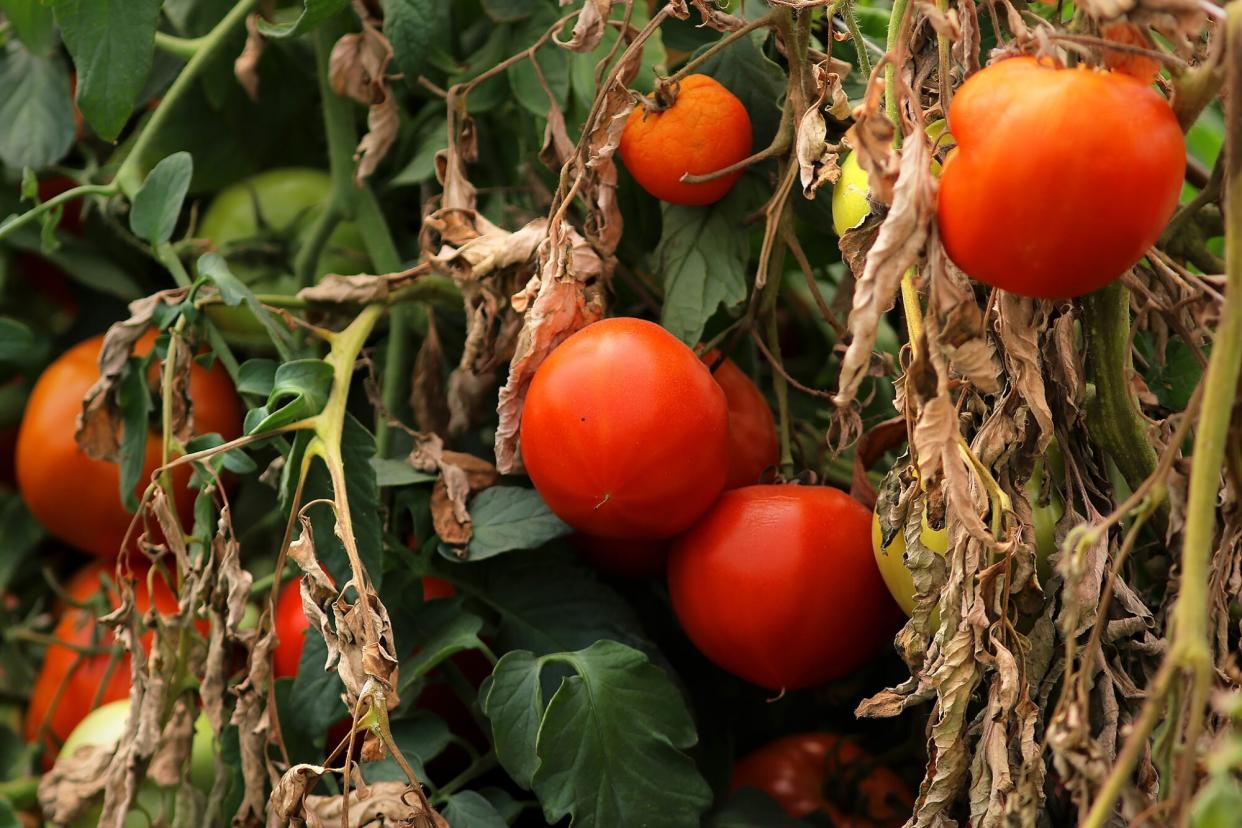Drought Conditions Are Forcing Farmers to Destroy Crops, Farm Bureau Reports

Lane Turner / The Boston Globe via Getty Images
Much of America has been dealing with drought this summer. According to government data, for the week ending August 9, 43 states were under at least moderate drought conditions, accounting for half the landmass of the lower 48 states. The Southwest has been hit the worst, from Texas (which had its hottest July on record), west to California, and as far north as the Dakotas.
The American Farm Bureau Federation (AFBF) has tried to quantify just how bad things have been for the agriculture sector, surveying 652 industry members from drought stricken states last month. And as expected, their findings are not good.
Asked about a prevalence of reduced harvest yields, 74 percent of respondents said their yields were down, an increase from 72 percent of respondents last year. Also, the prevalence of switching planned crops, tilling under crops, and removing orchards trees or other multiyear crops had all increased this year from 2021, meaning some farms were being forced to destroy their crops due to a lack of water.
Overall, across the region, the survey found that crop yields were expected to be down 38 percent this year due to drought.
The lack of rainfall was affecting livestock, too. For the second year in a row, two-thirds of those surveyed reported a prevalence of selling off portions of herds and flocks. And 71 percent of those surveyed said animals were being removed from rangeland due to insufficient forage.
The AFBF states that the 17 states in this region make up nearly half of country's $364 billion agricultural production sector — including 74 percent of beef cattle; 50 percent of dairy production; over 80 percent of wheat production by value; and over 70 percent of vegetable, fruit, and tree nut production by value. As a result, the Farm Bureau says businesses will see reduced income — and in some cases, risk going out of business — while consumers will face higher prices and possible shortages, problems that have been further exacerbated by other inflationary and supply chain issues.
"The effects of this drought will be felt for years to come, not just by farmers and ranchers but also by consumers," AFBF president Zippy Duvall said in a press release. "Many farmers have had to make the devastating decision to sell off livestock they have spent years raising or destroy orchard trees that have grown for decades. Long-term solutions to drought mitigation must be discussed and implemented to ensure farmers in drought-prone regions can continue to provide safe, affordable and abundant food for their states and the rest of the country."

